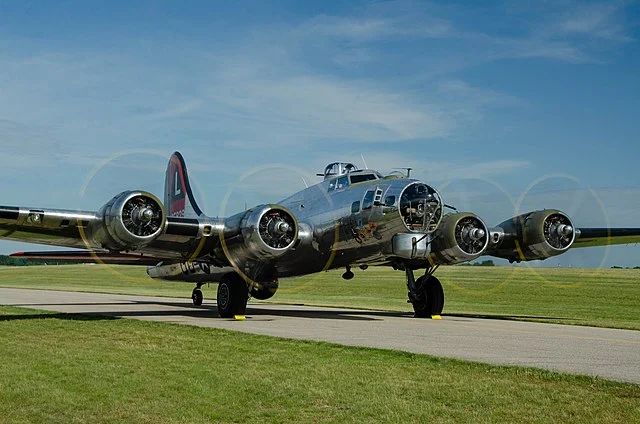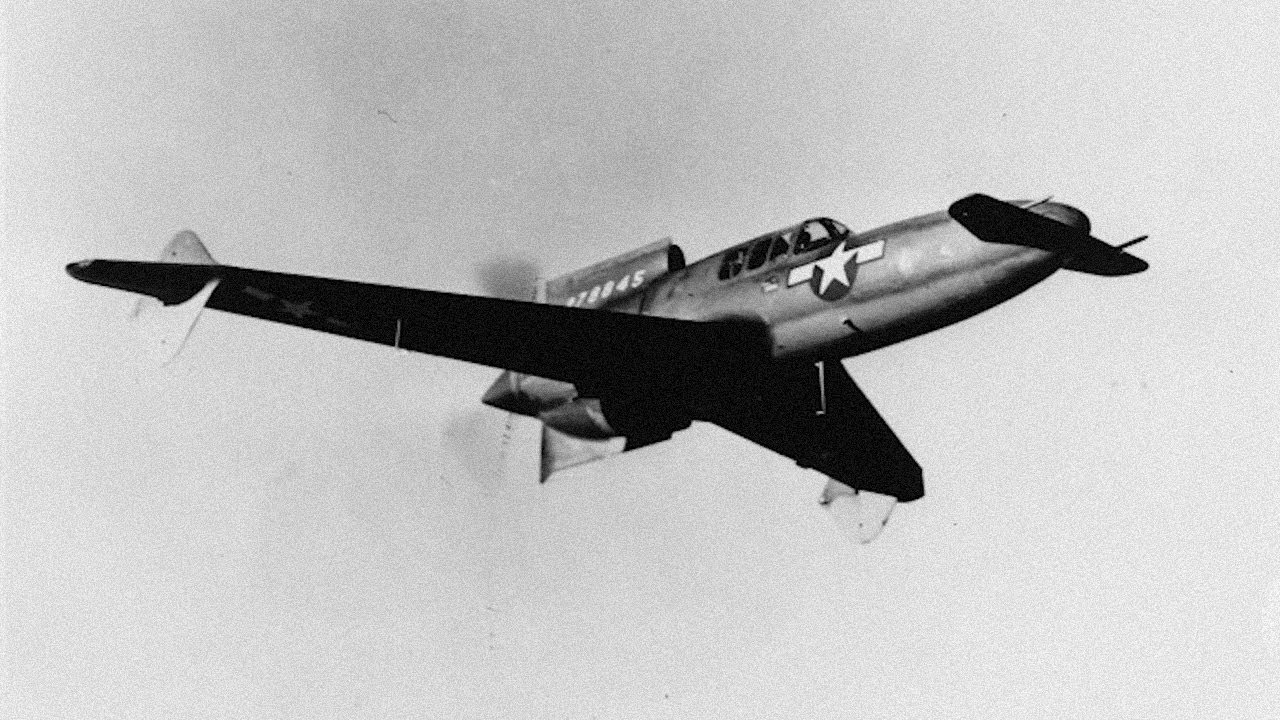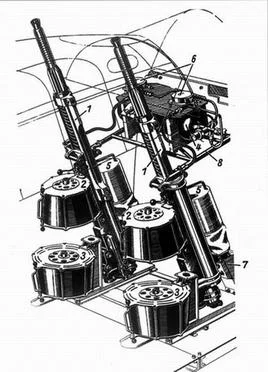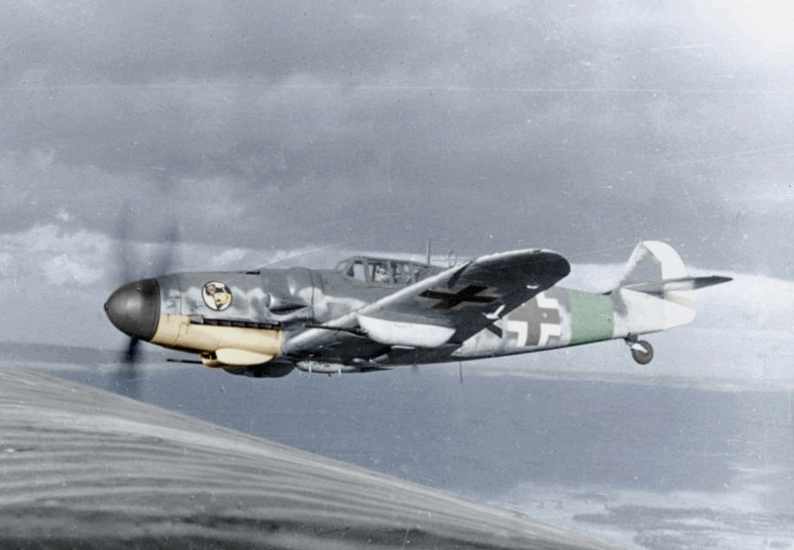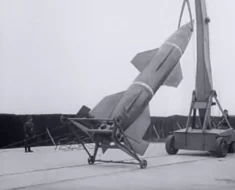One of the most heavily armed bomber aircraft produced, the Flying Fortress was used extensively by the US Army Air Force during the Second World War and became an iconic symbol of the Allies success in the war.
First developed by the Boeing company in 1935, it would serve with Allied forces up until the end of the conflict. The B-17 was responsible for one of the greatest amount of bombs of any aircraft dropped in the war and also paved the way for technological advancement with aircraft air defences.
Contents
Development of the Flying Fortress
The origins of the B-17 began in 1934 when the former United States Army Air Corps (USAAC) sent out a proposal for a new bomber aircraft that could carry a substantial payload at an altitude of 10,000 ft and be flown at a speed of at least 200 miles per hour.

Flying Fortress
The proposal was also intended as a competition between what Boeing, Douglas and Martin aircraft manufacturers could produce.
Read More: Hawker Hurricane – The True Hero of the Battle of Britain?
At the Boeing plant in Seattle, the design process for the new bomber was spearheaded by designers E. Gifford Emory and Edward Curtis Wells. The initial prototype was named Model 299 and was intended to feature five defensive machine gun turrets and carry a payload of up to 4,800 lb bombs in a bay located behind the cockpit.
The machine gun turret mounted in the nose was considered innovative by allowing the gunner to fire at all forward-facing angles.
The 229’s wingspan totalled 103 ft and it was powered by 1,200 hp Wright R-1820 radial engines.
Boeing also intended their new plane to be the first that could still fly and function in the air in the event of one of its engines failing.
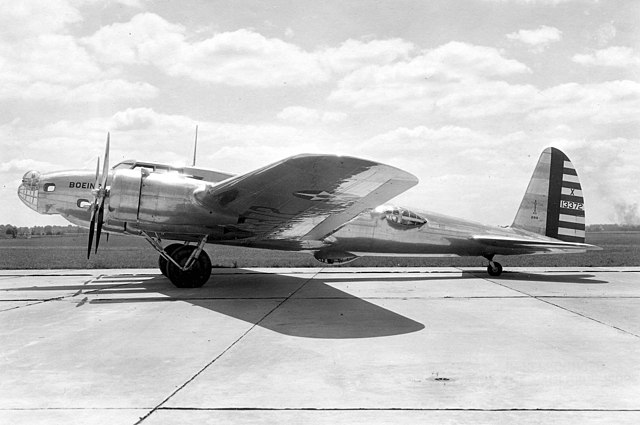
Testing the Flying Fortress
The Model 299 completed its first flight in July 1935. It was a local reporter for The Seattle Times who first described the prototype as looking like a Flying Fortress when describing the number of machine turrets fitted to the plane. Boeing realized the marketing potential of the name and it remained.
In August 1935, the Flying Fortress made a second test flight from Seattle to Wright Field in nine hours and saw an average cruising speed of 252 miles per hour, a faster average speed than the competition designs proposed by Douglas and Martin. Major General Frank Maxwell Andrews of the USAAC approved Boeing’s design based on its performance
In October 1935, Boeing wanted to test the climb rate of the prototype, however, it crashed shortly after takeoff, killing its crew and disqualifying it from the competition.
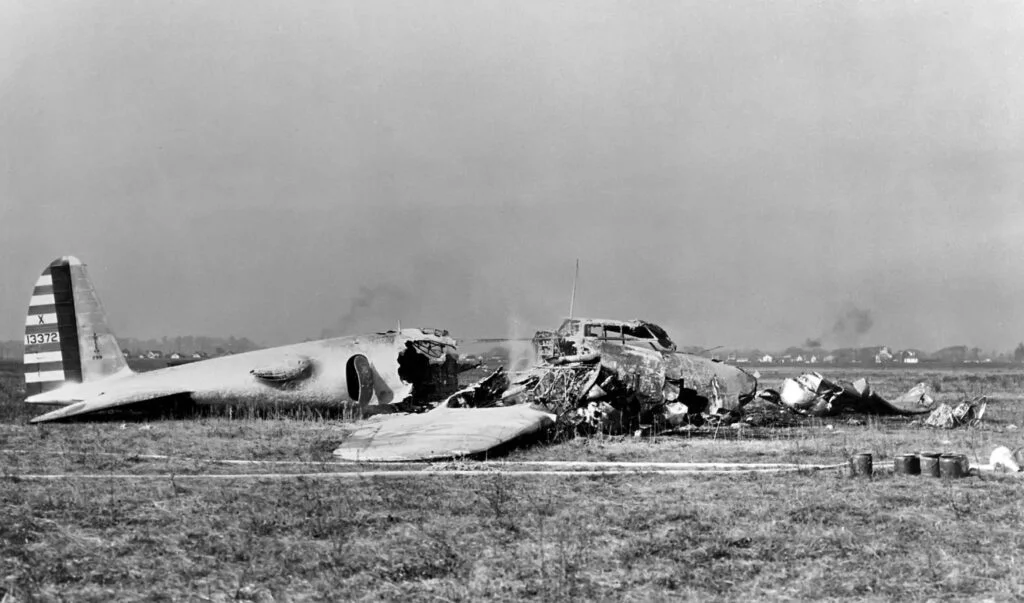
The cause of the crash was found not to be with the aircraft’s design itself, but the crew not removing gust locks fitted to the plane before takeoff. As a result, the accident inspired mandatory checklist procedures for all pilots to follow before takeoff.
Although the Flying Fortress was deemed safe to fly, the USAAC held reservations about the cost of the aircraft units but agreed to order thirteen units of the new bomber in 1936.
The B-17 proved reliable in service, even with reservations about its price, and the USAAC stepped up its orders with 155 B-17 units being delivered between 1937 and 1941. Following Japan’s attack on Pearl Harbor in 1941, production and orders were sped up and the B-17 soon broke the record for the fastest production output of a bomber aircraft.

As the B-17 was put into combat, Boeing continued to update and modify the design. Later models replaced the number of guns from seven to thirteen, giving it improved defence capabilities. In the latter stages of the war, the B-17 was fitted with revolutionary technology, including remote-controlled gun turrets, radio controls and precision-guided bombs and missiles.
Read More: Hewitt-Sperry Automatic Airplane – First Ever Cruise Missile
Overall production numbers totalled out at around 12,000 units.
Flying Fortress RAF Service
The B-17 first saw its first frontline service with the Royal Air Force in 1941. At the outbreak of the Second World War, the RAF bomber fleet had mostly consisted of twin-engine, medium-range bomber aircraft.
Although larger, heavy-weight bombers such as the Handley Page Halifax and the Short Stirling were under development, the RAF bought 20 B-17 units from the USAAC.

The RAF began using the B-17 against targets in Germany in July 1941. Although the Flying Fortress was an advanced bomber, the RAF lost eight of its Flying Fortresses during initial operations and aircrews also complained of technical problems with the aircraft. The raids ultimately ceased after daylight bombing was deemed too risky.
However, the initial problems demonstrated to Boeing where improvements could be made and the B-17’s defences were redesigned and improved as a result.
The RAF redirected many of its B-17s from bombing roles to coastal patrol and reconnaissance missions. Perhaps most notably, the RAF formed the No. 233 Squadron for electronic warfare and the B-17 was used extensively in this role.
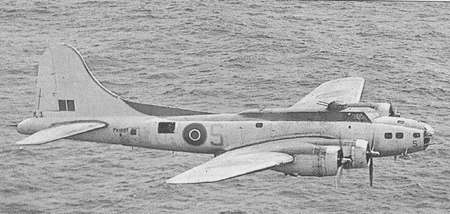
The B-17 would accompany bombers on their missions and use electronic equipment to jam or interfere with radio communications between Luftwaffe fighters and ground control.
Flying Fortress in US Service
In 1941, the USAAC was renamed the United States Army Air Force (USAAF) and the B-17 played an important role in bombing campaigns for the USAAF in all theatres of the war.
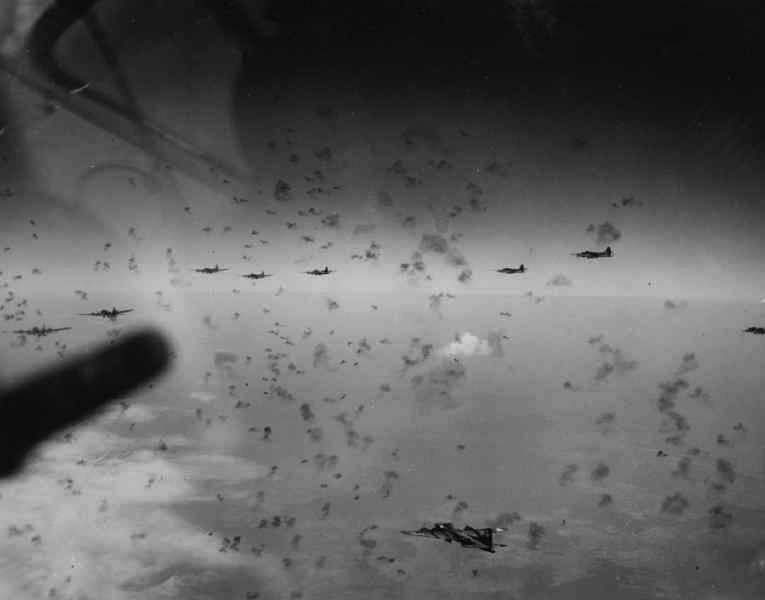
In May 1942, USAAF bombers arrived in England and formed the 97th Bomb Group based at RAF High Wycombe. The arrival of the B-17 forces helped to ease RAF misgivings about the earlier performance of the aircraft after successful bombing campaigns took place against railways in occupied Northern France in August 1942, in which no aircraft were lost.
However, as Flying Fortress raids against occupied Europe and Germany increased, the Luftwaffe stepped up its air defence campaigns against Allied bombers, resulting in mounting losses for the USAAF.
In contrast to other Allied air forces, the USAAF believed that a large number of heavily armed bombers would hold their own against attacking Luftwaffe aircraft despite evidence from RAF and Luftwaffe raids showing that unescorted bombers performing daylight raids were incredibly vulnerable.

The bomber played a crucial role in the Allied Combined Bomber Offensive (CBO) from January 1943 onwards. A raid over Schweinfurt in October 1943 became known as “Black Thursday” as sixty B-17 bombers were shot down during the mission.
Learning from the incident and knowing it was not sustainable to be losing vast numbers of aircraft and crews, B17 squadrons were escorted over Germany by the P-51 Mustang and the P-47 Thunderbolt fighter aircraft.
The combined power of the bombing abilities of the B-17 and the speed of the escorting Mustang fighters caused significant damage to both the Nazi war effort on the ground and the Luftwaffe fighters sent to attack the large formations.
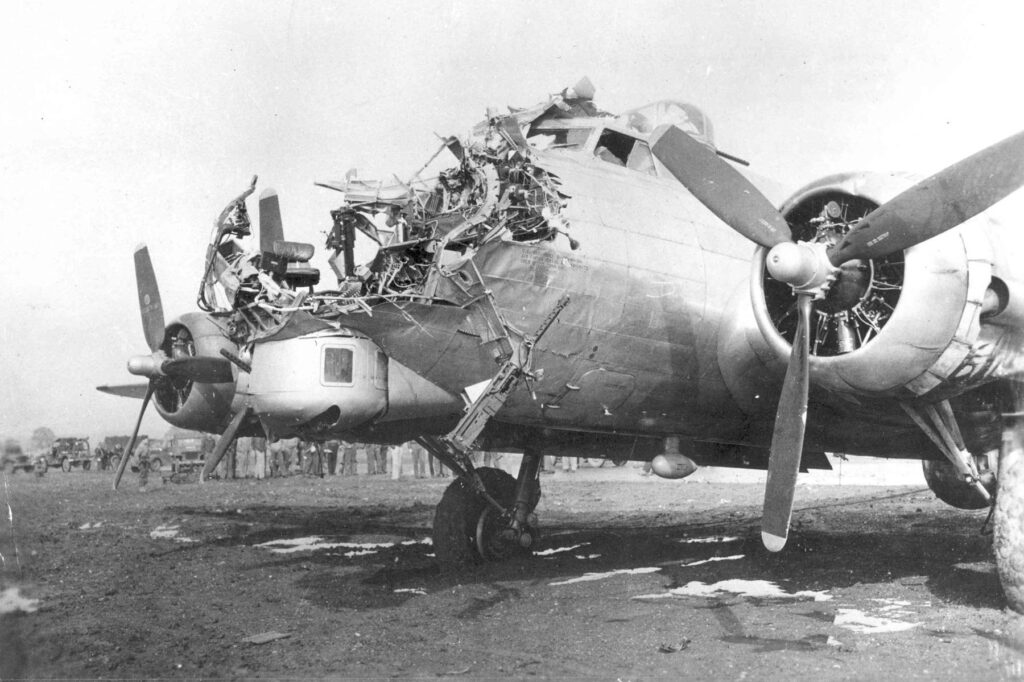
As such, both aircraft were credited with helping Allied forces gain total air superiority over Europe.
Read More: Northrop XP-79 – The Flying Battering Ram
The Flying Fortress also saw action against the Axis powers in the Pacific Theatre and was first deployed as a reconnaissance aircraft in the Philippines in December 1941.
As a bomber, the B-17 initially saw a mixed performance in combat over the Pacific. At the Battle of Midway, aircrews were instructed to fly their planes at a high altitude to avoid interception and attacks from Japanese A6M Zero fighters. However, bombing from such a height meant a majority of crews were unable to hit their intended targets.

The Flying Fortress saw some success during the Battle of the Bismark Sea in March 1943 and joined forces with aircraft from the Royal Australian Air Force and successfully sunk a number of Japanese troop-carrying ships.
By 1943, the USAAF decided that the B-17 was more suited to use in European airspace and was kept mainly as a search and rescue aircraft in the pacific.
Where was the B17 bomber built
The B-17 bomber, was primarily built by Boeing at their factory in Seattle, Washington, USA. The production of B-17 bombers began in the late 1930s, and Boeing built a total of 6,981 B-17s during World War II.
In addition to Boeing, the B17 bomber was also produced by Douglas Aircraft Company, which built a smaller number of B-17s at their plant in Long Beach, California. However, the majority of B-17s were built by Boeing in Seattle.
After the war, some B-17 bombers were sold to foreign governments, and others were used for various civilian purposes such as aerial mapping, firefighting, and cargo transport. Today, only a few dozen B-17 bombers remain in flying condition and are operated by various organizations for historical and educational purposes.
How many bombing raids did the B17 Bomber fly
The exact number of bombing raids flown by the B-17 is difficult to determine, as they were used for a wide variety of missions, including precision bombing, area bombing, and strategic bombing.
However, it’s estimated that B17 bombers flew over 290,000 sorties during World War II, dropping around 640,000 tons of bombs on enemy targets.
B17 bombers were used in many key campaigns of the war, including the bombing of German industrial centers and military targets, as well as support for ground troops during the D-Day invasion of Normandy.
It’s worth noting that the B17 bomber was not the only aircraft used for bombing raids during World War II, and other planes such as the B-24 Liberator and the B-29 Superfortress were also used by the USAAF. However, the B17 Flying Fortress remains one of the most iconic and well-known bombers of the war.
Post-war
The end of the Second World War reduced the need for mass produced heavy bombers and the B17 was withdrawn from combat roles. The incoming jet-age further rendered high altitude propeller driven bombers obsolete in most war situations.

Some units were reserved for VIP operations but from 1946 onwards began to play an important role during Operation Crossroads: the atomic bomb tests carried out by the US in the South Pacific.
The B17 was able to perform atmospheric tests to measure radiation in the air by flying close to the mushroom cloud without endangering the crew inside.
B-17 units also found use as drones or drone-tugging planes for pilots to practice air-to-air combat.
The US Coast Guard also continued to operate units of B17 and these would rescue people at sea using a special Skyhook system in which a raft or a harness would be dropped to the water with a deployable balloon attached. The person in need of rescue would release the balloon which the B17 would catch using a hook at the front of the plane.
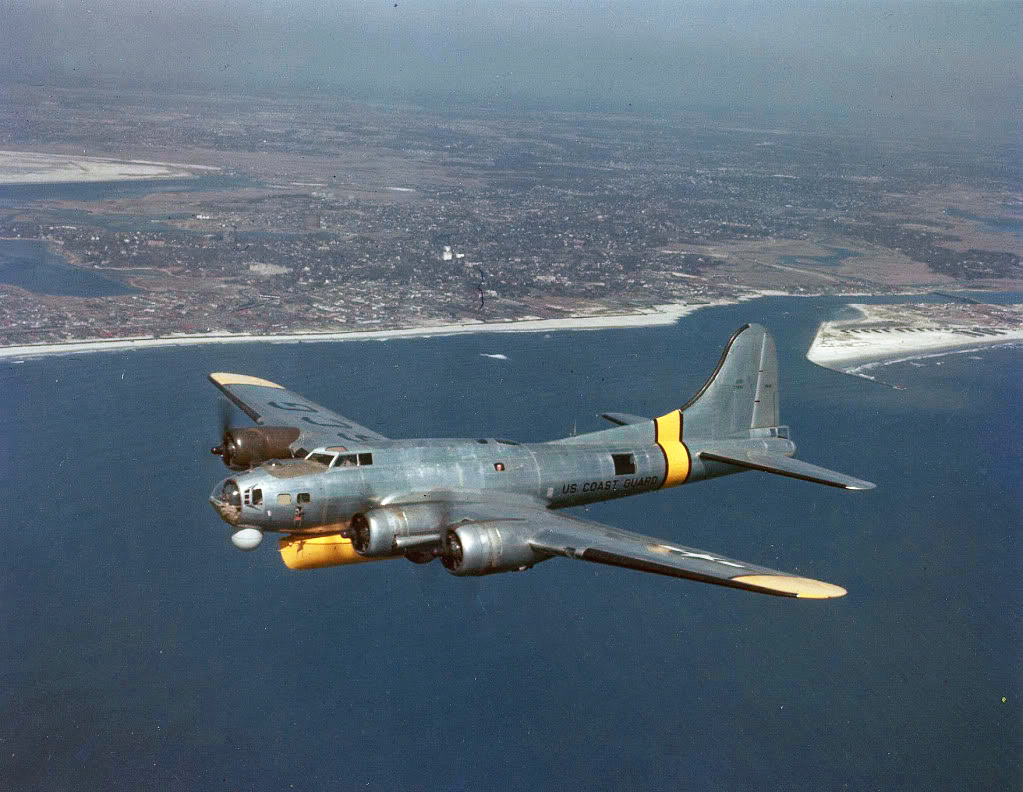
The B-17 continued in search and rescue roles until its final retirement in 1959.
Legacy of the Flying Fortress
Despite its shaky start in RAF service, the B17 Flying Fortress played a very significant role with Allied forces in Europe and became synonymous with American air power during the war.
Pilots who flew the B-17 commended it as a dependable and sturdy aircraft. Aircrews also were known to praise the fact Boeing designed the aircraft with the protection of the men serving inside in mind. The B17 was also known to successfully return to base even after being damaged by enemy fire or suffering technical faults.

Read More: Convair FISH & KINGFISH – The Stealth Parasites
Today, it is estimated around 45 B17 units remain intact with four being in airworthy condition.
Perhaps the most famous example of a surviving B17 is the Memphis Belle which became the first American bomber aircraft to complete 25 bombing raids. Its story was the inspiration for the 1990 war film Memphis Belle and the original aircraft was fully restored in 2005.
If you like this article, then please follow us on Facebook and Instagram.
Specifications of the Flying Fortress
- Crew: 10: Pilot, co-pilot, navigator, bombardier/nose gunner, flight engineer/top turret gunner, radio operator, waist gunners (2), ball turret gunner, tail gunner
- Length: 74 ft 4 in (22.66 m)
- Wingspan: 103 ft 9 in (31.62 m)
- Height: 19 ft 1 in (5.82 m)
- Empty weight: 36,135 lb (16,391 kg)
- Max takeoff weight: 65,500 lb (29,700 kg)
- Powerplant: 4 × Wright R-1820-97 “Cyclone” turbosupercharged radial engines, 1,200 hp (895 kW) each
- Maximum speed: 287 mph (462 km/h, 249 kn)
- Range: 2,000 mi (3,219 km, 1,738 nmi) with 6,000 lb (2,700 kg) bombload
- Service ceiling: 35,600 ft (10,850 m)
- Rate of climb: 900 ft/min (4.6 m/s)

